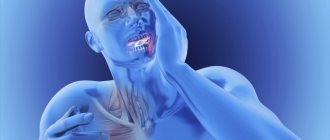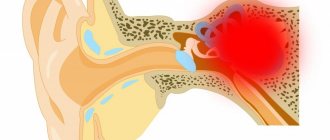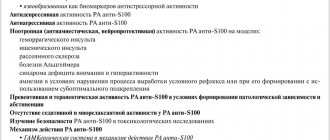INSTRUCTIONS
on the use of the medicinal product for medical use Colchicum-Dispert®
Registration number:
P N014955/01
Trade name of the drug: Colchicum
International non-proprietary or generic name :
Chemical name: (S)-N-(5,6,7,9- tetrahydro
10-tetramethoxy-9-oxobenzo[α]heptalene-7-y1) acetamide
Dosage form: film-coated tablets
Description: dark
red round shiny tablets, film-coated.
Pharmacotherapeutic group drug
ATX code:
[M04AC01]
COMPOUND:
1 film-coated tablet contains: Active substance:
Colchicum autumnalis seed extract [eq.
500 mcg of colchicine] [composed of extract 57-64% lactose, 28-32% microcrystalline cellulose] 15.6 mg; Excipients:
Core: copovidone 5.33 mg, corn starch 27.5 mg, lactose monohydrate 41.6-43.9 mg, magnesium stearate 0.33 mg, palmitostearic acid 1.34 mg, talc 7.00 mg, cellulose microcrystalline 3.6-5.2 mg. Shell: acacia gum 0.3 mg, carnauba wax 0.140 mg, sodium carmellose 0.273 mg, magnesium oxide 2.6 mg, macrogol 6000 1.093 mg, opalux AS 250000 [sucrose - 0.7923 mg, Ponceau dye 4R (E124) - 0 ,26334 mg, quinoline yellow dye (E104) - 0.09652 mg, titanium dioxide (E171) 0.07904 mg, povidone 0.0133 mg] 1.2445 mg, povidone - K 25 2.186 mg, sucrose 86.1515 mg, talc 11, 975 mg, titanium dioxide (E171) 3.717 mg, shellac 0.32 mg.
PHARMACOLOGICAL PROPERTIES
- The antigout effect of colchicine is associated with a decrease in the migration of leukocytes to the site of inflammation and inhibition of phagocytosis of microcrystals of uric acid salts. It also has an antimitotic effect, suppresses (fully or partially) cell division at the stage of anaphase and metaphase, and prevents degranulation of neutrophils. By reducing the formation of amyloid fibrils, it prevents the development of amyloidosis.
- Highly effective for relieving acute gout. In the first 12 hours of therapy, the condition improves significantly in more than 75% of patients. In 80%, it may cause adverse reactions from the gastrointestinal tract before or simultaneously with clinical improvement.
- A daily dose of 1-2 mg when taken daily in 3/4 of patients with gout reduces the likelihood of developing repeated acute attacks.
- Prevents acute attacks in patients with familial Mediterranean fever (reduces the activity of dopamine beta-hydroxylase).
- Increases the life expectancy of patients with primary AL amyloidosis.
- Has a positive effect on the skin (softening, reducing dryness) with systemic scleroderma.
MECHANISM OF ACTION*
✔︎ suppression of activation of the NLRP3 inflammasome in response to MUN microcrystals; ✔︎ suppression of the expression of nuclear factor kappa B (NF-κB; nuclear factor kappa light chain enhancer of activated B cells) – a universal transcription factor that controls the expression of genes of the immune response, apoptosis and cell cycle; ✔︎ decrease in the density of tumor necrosis factor α (TNFα) receptors on the membrane of macrophages and endothelial cells (EC); ✔︎ decreased expression of the adhesion molecule L-selectin on the neutrophil membrane; ✔︎ violation of the distribution of E-selectin on the EC membrane; ✔︎ inhibition of the synthesis of superoxide anions; ✔︎ suppression of mast cell degranulation; ✔︎increased synthesis of transforming growth factor β (TGFβ).
The biological effects of colchicine are dose-dependent (different effects are realized at different concentrations of colchicine)
*Dalbeth et al Clinical Therapeutics / Volume 36, N. 10, 2014, 1465-79; Alekberova ZS, Nasonov EL. Prospects for the use of colchicine in medicine: new data. Scientific and practical rheumatology. 2020;58(2):183-190.
PHARMACOKINETICS
Colchicine is quickly and intensively absorbed from the gastrointestinal tract. The average maximum plasma concentration is 4.2 ng/ml and is achieved approximately 70 minutes after administration of a 1 mg dose. The half-life is 9.3 hours. Colchicine quickly penetrates tissues and has a high volume of distribution of 473 liters. High concentrations of colchicine are found in the liver, kidneys, spleen, leukocytes and gastrointestinal tract. Colchicine is metabolized in the liver and is excreted primarily in bile. Enterohepatic circulation is detected 4-6 hours after oral administration. The largest part of the administered dose is excreted through the intestines and about 23% through the kidneys.
INDICATIONS FOR USE
- acute attacks of gout
- periodic illness (familial Mediterranean fever)
CONTRAINDICATIONS
- Hypersensitivity, pregnancy, lactation, liver and/or renal failure, severe inhibition of bone marrow hematopoiesis. It should be prescribed with extreme caution to elderly patients, as well as those with cachexia and those with severe dysfunction of the gastrointestinal tract and cardiovascular system.
- Lactose intolerance, lactase deficiency, sucrase/isomaltase deficiency, fructose intolerance, glucose-galactose malabsorption.
- Children under 18 years of age.
CAREFULLY
Patients with diabetes mellitus (due to the content of sucrose and lactose in the composition of the drug).
METHOD OF APPLICATION AND DOSES
Inside.
The tablets are swallowed whole, without chewing, with a sufficient amount of liquid.
In case of an acute attack of gout, first take 2 tablets (1 mg of colchicine), and then 0.5-1.5 mg every 1-2 hours until the pain subsides.
The total dose of the drug taken per day should not exceed 8 mg.
Re-appointment according to the treatment regimen for an acute attack of gout can be carried out no earlier than after 3 days.
To prevent acute attacks of gout in the first few months of treatment with uricosurics, take 0.5-1.5 mg daily or every other day for (usually) 3 months.
Comparison of the effectiveness and safety of high and low doses.
SIDE EFFECTS
Diarrhea, nausea, vomiting and stomach pain, rare cases of leukopenia (decreased number of white blood cells). In some cases, after long-term treatment, myopathy and neuropathy were observed, less often - agranulocytosis, hypoplastic anemia (change in the number of blood cells), alopecia (baldness).
OVERDOSE
Acute intoxication has been observed in adults after taking a dose of about 20 mg and in children after taking a dose of 5 mg. Chronic toxicity may occur in patients with gout after taking a total dose of 10 mg or higher over several days. Since colchicine has antimitotic activity, organs that are characterized by a high proliferation rate are more often affected. Symptoms of intoxication. Approximately 2-6 hours after ingestion of a toxic dose, burning and soreness in the throat and mouth, urge to vomit and difficulty swallowing, nausea, thirst and vomiting are noted, and after that - urge to urinate and defecate, tenesmus and colic (usually , in malnourished patients). Muco-watery and/or hemorrhagic diarrhea may lead to loss of fluid and electrolytes, resulting in the development of hypokalemia, hyponatremia and metabolic acidosis. Often patients complain of both tightness and pain in the heart area. Subsequently, pallor, decreased body temperature, cyanosis and dyspnea are observed. The development of tachycardia and arterial hypotension (up to collapse) is possible. Neurological disorders manifest themselves in the form of decreased sensitivity, seizures and symptoms of paralysis. Death is possible in the first three days due to cardiovascular failure and respiratory paralysis. 1-2 weeks after treatment of intoxication, complete, sometimes long-term alopecia may be observed. In some cases, dysfunction of the kidneys, lungs and liver was observed. Rare cases of blindness have been reported. Treatment of intoxication. Treatment can only be symptomatic, which is aimed at stabilizing the cardiovascular system. Plasma substitutes or isotonic sodium chloride solution with the addition of glucose and electrolytes (mainly potassium) are administered intravenously, and ECG monitoring is performed. Digoxin can be prescribed to maintain myocardial contractility. If necessary, antibiotic therapy. For elevated cerebrospinal fluid pressure, dexamethasone is indicated; A lumbar puncture may be necessary. For abdominal cramps, atropine, papaverine or tannalbine are prescribed. Opiates should not be used. It may be necessary to use oxygen therapy or perform artificial respiration.
INTERACTION WITH OTHER MEDICINES
In combination with cyclosporine, especially in patients with impaired renal function, the likelihood of developing myopathy increases. Enhances the effect of depriming and sympathomimetic drugs. Interferes with the absorption of cyanocobalamin. Non-steroidal anti-inflammatory drugs and other drugs that cause myelosuppression increase the risk of developing leukopenia and thrombocytopenia. Anti-gout activity is reduced by cytostatics (increasing the concentration of uric acid) and drugs that acidify urine and alkalize the effect. Colchicum-Dispert® can be used in combination with allopurinol and uricosuric drugs.
SPECIAL INSTRUCTIONS
Treatment must be carried out under close hematological and clinical supervision. If severe side effects from the gastrointestinal tract occur, the dose should be reduced or the drug discontinued. If the number of leukocytes decreases below 3000/μl and platelets below 100,000/μl, the intake is stopped until the blood picture normalizes.
Influence on the ability to drive a car and control machines and mechanisms: no effect. Release form: 20 tablets in Al/PVC/PVDC blister, 1 blister with instructions for use in a cardboard box. Storage conditions: Store in a dry place, protected from light, at a temperature not exceeding 25°C. Keep out of the reach of children! Shelf life: 5 years. The expiration date is indicated on the packaging. The drug should not be used after the expiration date. Conditions for dispensing from pharmacies: according to a doctor's prescription Holder of the registration certificate and issuing quality control: Pharmaselect International Beteiligungs GmbH, Ernst-Melchior-Gasse 20, 1020 Vienna, Austria. Manufacturer: Haupt Pharma Wülfing GmbH, Betelner Landstrasse 18. 31028 Gronau/Laine, Lower Saxony, Germany. Organization receiving consumer complaints: PHARMAGET LLC, 127322, Moscow, st. Yablochkova, 23-2-20. Tel.: +7 (495) 991-91-71, email
If you find an error, please select a piece of text and press Ctrl+Enter.
Colchicum-Dispert
Colchicum-Dispert is an analogue of the full type. The drug is developed on the basis of an extract from the seeds of autumn crocus. Colchicum-Dispert has the property of slowing down the movement of leukocytes to the site of inflammation and stopping the formation of uric acid crystals. It normalizes the synthesis of protein metabolism, thereby preventing the development of amyloidosis. The medicine effectively relieves pain even during acute attacks: within 12 hours, the condition of 3⁄4 patients (that’s 75%) improves significantly. Prevents the recurrence of attacks.
Colchicum-Dispert
In addition, the drug has an effect on the functioning of the kidneys - it is a good diuretic that not only removes uric acid salts, but also calculi (stones).
Adenurik
Adenuric is one of the most effective analogues of the nosalgic type. It contains febuxostat, which affects the formation of uric acid. It is indicated for people suffering from gout, gouty tophi or gouty arthritis. The property of febuxostat to suppress the activity of xanthine oxidase can significantly reduce the level of uric acid in the blood serum.
Adenurik
Zilorik
A medicine that is often prescribed for gout. Contains allopurinol, so it slows down and stops the process of uric acid synthesis by. Due to its urostatic properties, taking Zilorik tablets reduces the acid content in the blood serum and dissolves urate crystals.
Note! Unlike Colchicine, analogues containing allopurinol are recommended to be taken to prevent attacks. If you take the pill during a gout attack, the condition may worsen.
Zilorik
Probenecid
The active ingredient of this drug is probenecid (benzoic acid). The drug reduces the process of reverse absorption of uric acid (reabsorption) in the urinary tract, which allows stimulating its excretion naturally.
Probenecid
Probenecid reduces the concentration of urates in the blood serum and promotes their dissolution. With systemic use, pain in the joints decreases, they become more mobile and stop deforming. In addition, the process of restoring renal function is underway.
Milurite
Milurite is also formulated from allopurinol and is used to treat primary and secondary gout. Taking medications can reduce the concentration of uric acid in blood serum and urine. Thanks to this, the deposition of crystals in tissues and kidneys stops, and those crystals that already exist gradually dissolve. As a result, when urine is excreted, less uric acid is released, but hypoxanthine and xanthine begin to be released in larger quantities.
Milurite







